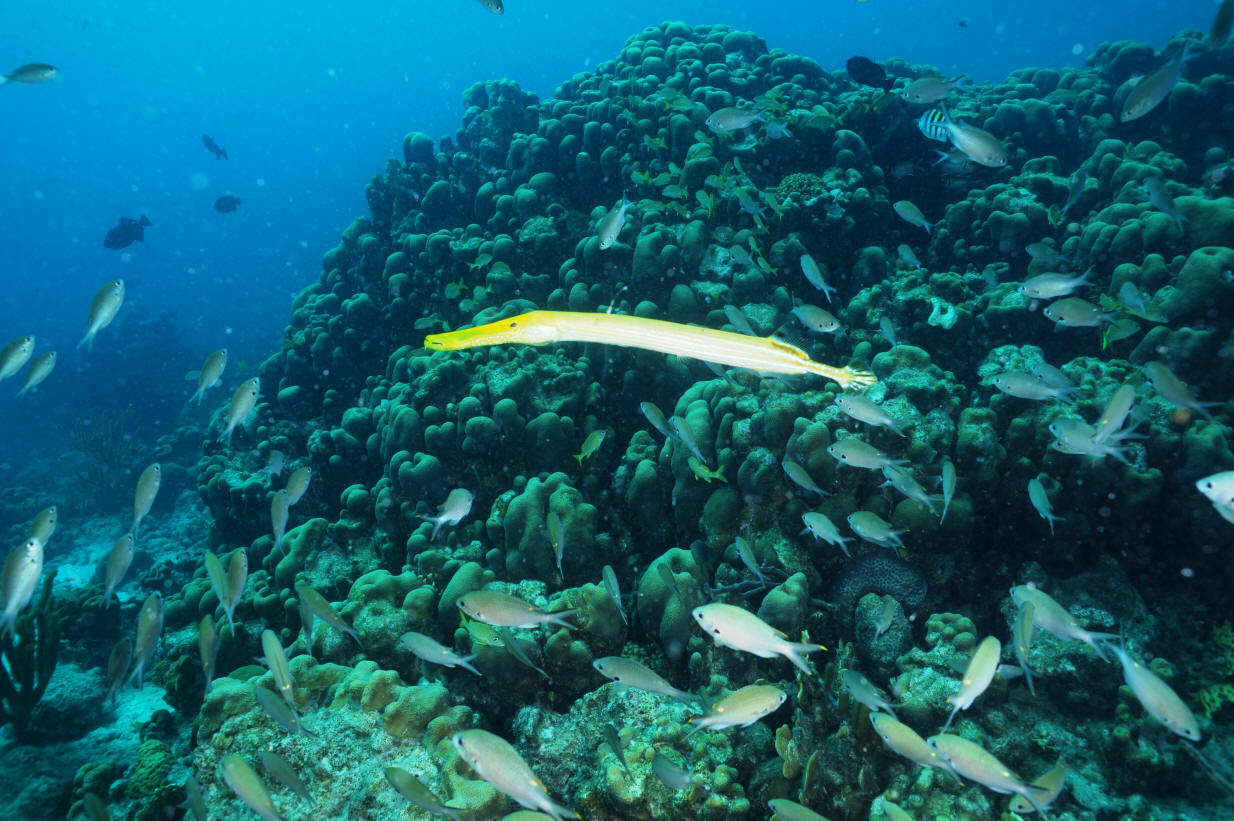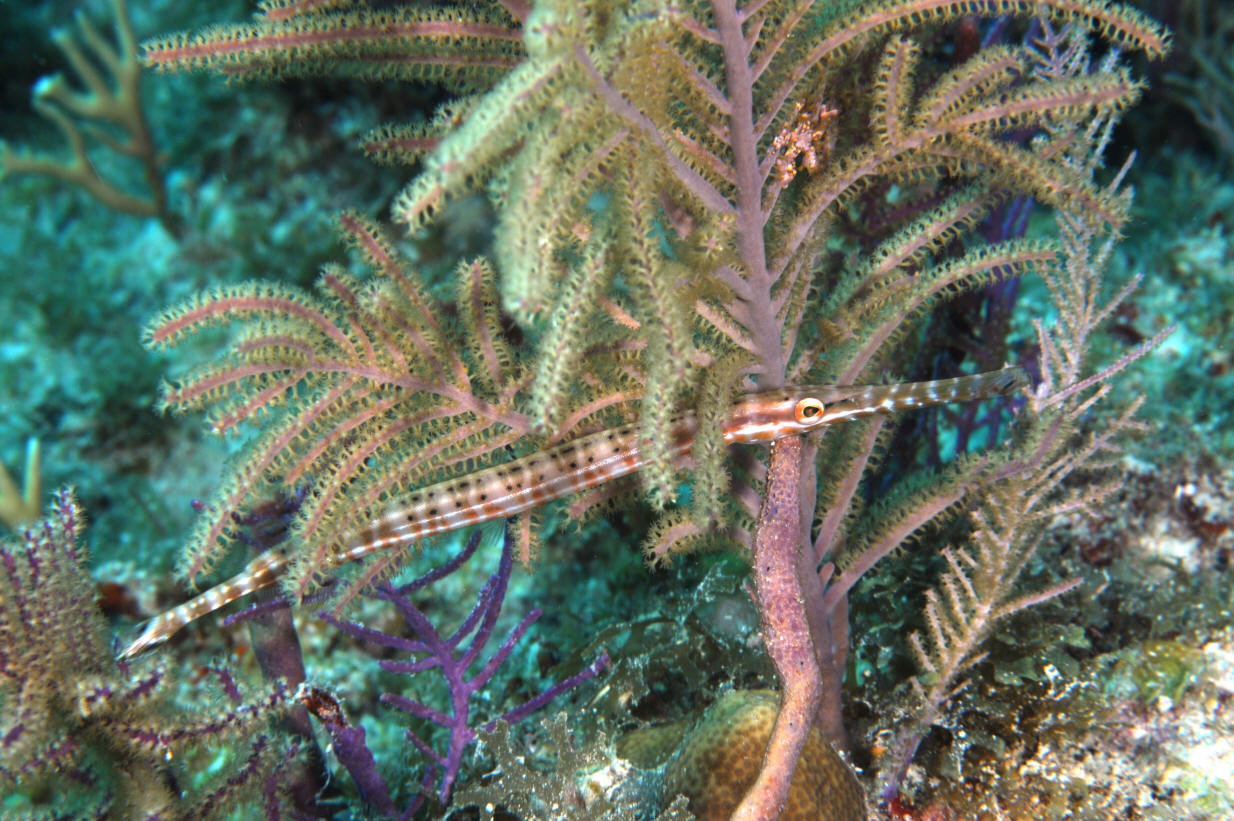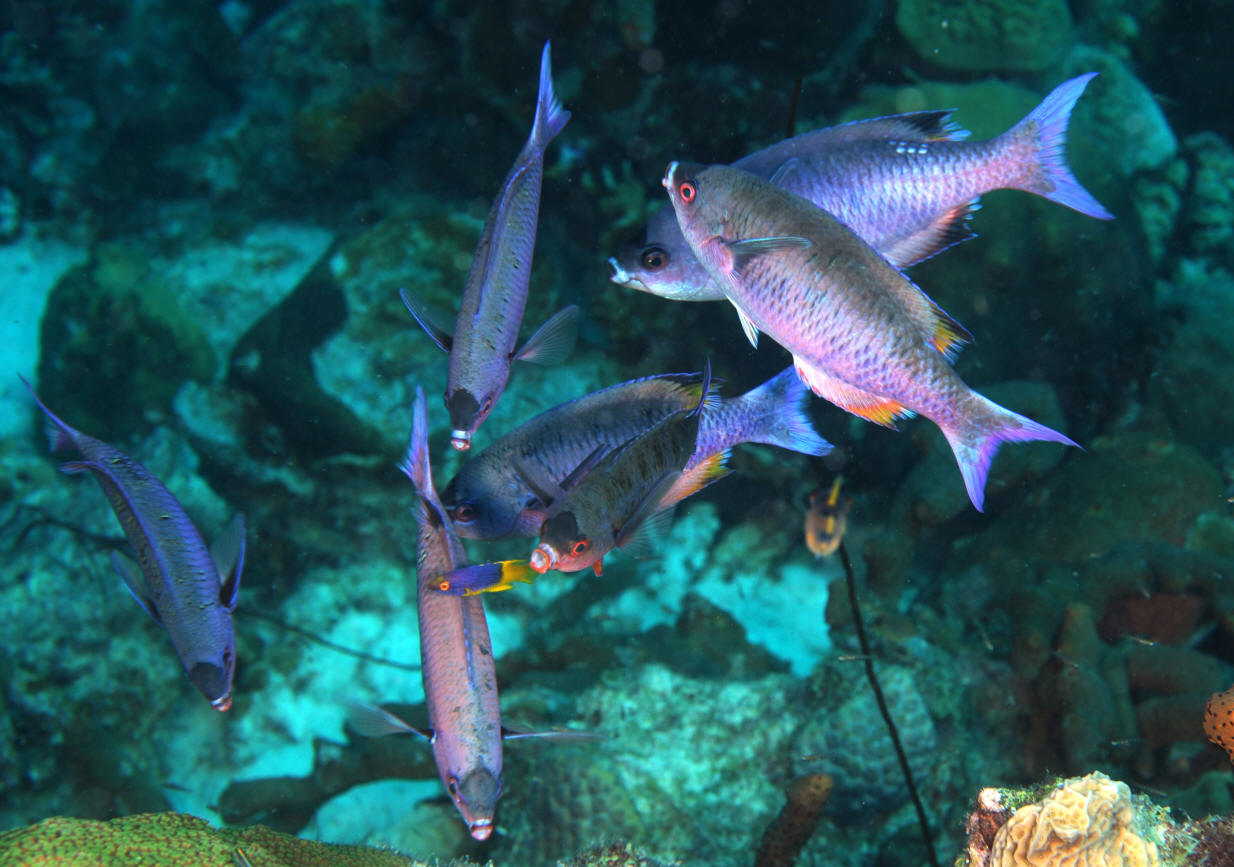
Aulostomus maculatus
FAMILY
Aulostomidae
TAXONOMY
Aulostoma maculatum Valenciennes, 1837, West Atlantic.
OTHER COMMON NAMES
None known.
PHYSICAL CHARACTERISTICS
The trumpetfish is slender and elongate. The head is about
one-third of the total length; the snout is tubular and the
mouth large, terminal, and very upturned. The chin has a
prominent barbel, and the eyes are relatively small and round.
Single dorsal fin is preceded by eight to 13 short, well-spaced
spines. Dorsal fin with 21–25 rays; anal fin opposite to dorsal
fin and also with 21–25 rays; pelvic fins very posterior. Scales
small and somewhat abrasive. Reaches at least 35.4 in (90 cm)
in length. Coloration varies. May have dusky brown or reddish
background with lighter stripes and darker spots, but some individuals
are yellow or green with a blue snout.
DISTRIBUTION
Western Atlantic from Florida to southeastern Brazil; also in
the Caribbean, Gulf of Mexico, Bermuda, and Antilles. Found
in the eastern Atlantic at Saint Paul’s Rocks.
HABITAT
Adults usually are found in coral reefs and associated habitats,
at depths ranging from 6.6 to 82 ft (2–25 m); juveniles live in
deeper water but also among sargassum.
BEHAVIOR
Trumpetfishes may hover in near vertical positions, with their
heads pointing downward, sometimes almost motionless. They
align their bodies with other linear objects, ranging from corals
to other fishes to crevices, blending in with their surroundings.
They also are capable of quick movements. Reported to change
color according to their
HABITAT
. They also use larger nonpiscivorous
fishes such as parrotfish as mobile blinds, hiding
behind them to approach within striking distance of prey.
FEEDING ECOLOGY AND DIET
Eats mostly smaller fishes and small invertebrates by employing
stealthy movements and suction feeding (pipette feeding).
May feed on larger fishes as well.
REPRODUCTIVE BIOLOGY
Mostly unknown; juveniles are known to inhabit deeper waters,
but eggs and larvae probably are pelagic.
CONSERVATION STATUS
Not listed by the IUCN.
SIGNIFICANCE TO HUMANS
Sometimes kept in public aquaria. A harmless fish, sometimes
marketed locally but of minor commercial importance.
Photo Gallery of - West Atlantic trumpetfish





 Animalia Life
Animalia Life